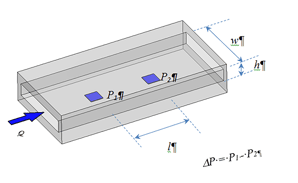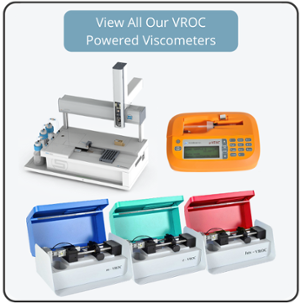Rheology is a branch of physics dealing with the deformation and flow of materials. Simply put, rheology is the study of the flow of matter. Rheology studies the flow of both solid and liquid matter. The most common rheological measurement of fluids is viscosity, which is often referred to as the thickness of a fluid.
A rheometer is an instrument used to measure the way a liquid flows in response to applied force, whereas a viscometer is an instrument used to measure the viscosity of a fluid. Traditional viscometers only measure viscosity under one flow condition and rheometers are used to measure rheology of fluids that cannot be defined by the single value viscosity.
There are two types of rheometers: rotation rheometers which control applied shear stress or shear strain and extensional rheometers, which apply extensional stress or extensional strain. There are four different shearing planes that can be used to measure rheological properties and different rheometers can be used to measure the different shear planes. Capillary rheometers, rotational rheometers, and cone and plate rheometers are often used to measure shear stress or shear strain. There are also multiple rheometers on the market that measure extensional stress and strain. .png?width=329&name=Extensional%20Viscosity%20(Blood).png)
Unlike rheometers, viscometers only measure the viscosity of fluids under one flow condition. Viscosity can be calculated using various methods and there are numerous viscometers on the market today, but not all viscometers are made alike. When measuring viscosity, it is important to know if the fluid you are working with is Newtonian or non-Newtonian. Viscosity of Newtonian fluids is constant and independent of shear rate, whereas the viscosity of non-Newtonian fluids is not constant and therefore dependent on shear rate. (1) Many viscometers on the market today are only capable of accurately measuring viscosity of Newtonian fluids.
RheoSense automated viscometers are powered by our patented VROC® (Viscometer-Rheometer-on-a-Chip) technology. VROC combines microfluidic and MEMS (Micro-Electro-Mechanical Systems) technologies to measure dynamic viscosity over a wide dynamic range of operation, allowing complete characterization of viscosity as a function of shear rate or temperature. Similar to the rheometer, VROC powered viscometers will measure the pressure drop to measure shear stress and use flow rates to control the flow.  Compared to conventional viscometers and rheometers, RheoSense’s rectangular slit method viscometers (USP chapter 914) offer several advantages:
Compared to conventional viscometers and rheometers, RheoSense’s rectangular slit method viscometers (USP chapter 914) offer several advantages:
- Small sample size requirement (26µL – 100µL)
- Cost-effective
- Characterization of both Newtonian & non-Newtonian fluids
- Enable high shear rates without flow instabilities
- Prevent evaporation and contamination of samples
- Render high throughput due to a simple flow-through design
Written by: Eden Reid, RheoSense Senior Marketing and Sales Operations




